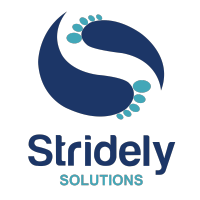What is a Data Lake?
A data lake is a centralized repository designed to store a vast amount of structured and unstructured data. The concept, introduced by James Dixon, CTO of Pentaho, was developed to address the limitations of traditional data marts.
Traditional data marts often struggle to provide comprehensive insights because they only analyze a subset of attributes, answering predetermined questions. This approach restricts users from gaining deep, actionable knowledge from all available data.
In contrast, a data lake preserves the state of data and maintains the three Vs of Big Data: Variety, Volume, and Velocity. By combining a data lake—such as Azure Data Lake—with existing data warehouse and data mart investments, organizations can store data in its raw form, enabling more extensive analysis and insight generation.
Data lakes offer significant advantages over traditional data warehouses by decoupling data storage from query engines. This separation allows for unlimited storage capacity and file size, schema-on-read capabilities, and numerous access methods, including programming languages, REST calls, and SQL-like queries. Users can analyze, query, and process data more efficiently, leveraging tools that best suit their needs.
Initially, only tech giants like Google, Apple, and Yahoo harnessed the power of data lakes. However, innovations like Hadoop, which includes YARN and HDFS, have democratized data lakes, making them accessible to small and medium-sized organizations. This democratization allows businesses of all sizes to capitalize on the extensive analytical capabilities of data lakes.
What is Microsoft Azure Data Lake?
Modern businesses generate vast amounts of both structured and unstructured data, from music files and social media posts to audio recordings and raw text. Microsoft Azure Data Lake is a comprehensive suite of data services designed to help businesses store, analyze, and manage this diverse data efficiently.
Azure Data Lake includes tools like Spark, Storm, HBase, and U-SQL, allowing for complex data processing and real-time analytics. With a pay-as-you-go pricing model, businesses can scale their data operations cost-effectively.
The platform’s ability to handle data at any scale, combined with robust security, compliance, and integration with other Azure services, makes it a powerful solution for unlocking the full potential of business data.
Components of Azure Data Lake
Azure Data Lake Storage (ADLS)
The first step in data analysis is uploading data, and Azure Data Lake Storage (ADLS) makes this process seamless. ADLS is a repository designed to store massive volumes of data, offering unlimited storage capacity. It supports WebHDFS, ensuring compatibility with the Hadoop File System (HDFS), and provides strong user security and hierarchical data storage.
The latest version, ADLS Gen2, integrates Blob storage features, including encryption at rest, data tiering, Azure AD-based permissions, and lifecycle policies. It also offers a hierarchical namespace (folders and metadata), Hadoop-compatible file system, and high performance for large-scale data processing. Services like HDInsight, Databricks, and ADLA can leverage these capabilities for efficient data handling.
Azure Data Lake Analytics
Azure Data Lake Analytics is a compute-specific service that connects to ADLS, offering scalable analytics without the need for significant upfront investment or configuration. Using U-SQL, a combination of C# and SQL, it allows .NET developers to process vast amounts of data efficiently. This immediate analytics service can scale according to user needs, making it a flexible and powerful tool for data analysis.
Learn More – Azure Synapse – Limitless Solution to Big Data
Azure HDInsight
Azure HDInsight is another core component, providing a cost-effective, enterprise-grade service for running popular open-source frameworks such as Apache Hadoop, Spark, and Kafka. HDInsight simplifies the process of leveraging these frameworks, enabling users to perform sophisticated data analytics and processing tasks within the Azure ecosystem.
Key Features for Advanced Analytics
Key features that empower advanced analytics within the Azure environment include:
- Limitless Scalability
Azure Data Lake Storage can handle massive volumes of both structured and unstructured data, accommodating the growing data needs of enterprises without constraints.
- Storage Tier Flexibility
ADLS offers multiple storage tiers—Hot, Cool, and Archive—allowing organizations to optimize costs based on data access patterns. This flexibility ensures efficient data lifecycle management, balancing performance and cost.
- Seamless Integration
ADLS seamlessly integrates with Azure Databricks, HDInsight, and Synapse Analytics, creating a comprehensive data ecosystem. This integration streamlines workflows and enhances the ability to perform complex data analytics and processing tasks.
- Security and Compliance
Azure Data Lake is built with robust security measures, including Azure Active Directory (AD) integration, Role-Based Access Control (RBAC), and encryption. These features ensure data protection and help organizations meet regulatory compliance requirements.
- Advanced Analytics Capabilities
With support for various analytics engines like Spark and Hive, ADLS empowers organizations to perform advanced data analytics. This capability drives innovation and informed decision-making by enabling deeper insights from large-scale and diverse datasets.
Industry Use Case Scenarios
Here are some industry-specific use cases:
- Retail
In the retail sector, Azure Data Lake facilitates the analysis of customer purchasing patterns, sentiment from social media, and inventory management. This analysis helps retailers optimize pricing strategies and create personalized marketing campaigns, enhancing customer satisfaction and boosting sales.
- Healthcare
Healthcare organizations use Azure Data Lake to manage patient data, medical records, and clinical trial information. This data management supports predictive analytics, treatment optimization, and research initiatives, leading to improved patient outcomes and more efficient healthcare services.
- Financial Services
Financial institutions leverage Azure Data Lake for fraud detection, risk management, and compliance reporting. By analyzing transactional data, they can detect suspicious activities, mitigate risks, and gain insights for more informed decision-making, ensuring regulatory compliance and enhancing security.
- Manufacturing
In manufacturing, Azure Data Lake enables predictive maintenance, supply chain optimization, and quality control. By integrating IoT sensor data, manufacturers can monitor equipment performance, predict maintenance needs, and improve production efficiency, reducing downtime and operational costs.
Read Succes Story – Asset Monitoring Web Portal With Azure And IoT
- Telecommunications
Telecommunications companies use Azure Data Lake for network performance monitoring, customer churn prediction, and targeted marketing. Analyzing call detail records and customer interactions allows for hyper-personalized services, improving customer retention and optimizing network performance.
- Human Resources
Organizations use Azure Data Lake as a central hub for generating comprehensive reports on employee data. This centralized data management facilitates effective policy formulation, contributing to employee and organizational well-being. It enables HR departments to analyze workforce trends, enhance employee engagement, and develop strategic initiatives.
Your Roadmap for Setting up a Data Lake with Azure
Setting up a data lake with Azure is a strategic initiative that requires careful planning and execution. Here are essential steps to ensure a seamless and effective implementation:
-
Configure Self-Hosted Integration Runtimes (IR)
Start by configuring self-hosted integration runtimes to establish robust connections to each data source. Understanding the intricacies of each source system is crucial for configuring integration runtimes effectively.
-
Establish Connectivity from ADF to Source Systems
Create reliable connections between Azure Data Factory (ADF) and each source system. This foundational step facilitates smooth data movement and processing within the data lake architecture.
-
Implement Backup and Disaster Recovery Plans
Prioritize the establishment of comprehensive backup and disaster recovery plans aligned with Azure guidelines. These plans ensure your data lake remains resilient against unexpected challenges, safeguarding critical data assets.
- Deploy Data Quality and Lineage Tracking
Enhance the integrity of your data lake by implementing robust data quality and lineage tracking mechanisms. Utilize tools like Azure Purview or leverage Azure Data Factory (ADF) and Synapse to monitor data quality and lineage, ensuring data reliability and compliance.
-
Establish Role-Based Access Control (RBAC)
Ensure data security by implementing Role-Based Access Control (RBAC) to govern data access securely. Define roles and permissions meticulously to protect sensitive information within the data lake environment.
Conclusion
In concluding our exploration of Azure Data Lake Storage, it’s evident that Azure provides a scalable and cost-effective solution for managing both structured and unstructured data. Its versatility makes it an excellent choice for accommodating diverse data sources and supporting the foundation of platform-based DataOps.
By following a systematic approach and leveraging Azure’s capabilities to handle various data types, organizations can unlock the full potential of their data lakes. This empowers them to establish efficient data engineering platforms capable of implementing robust big data analytics processes. These processes not only enhance business intelligence but also drive innovative data strategies that foster growth and competitive advantage.
To explore how Stridely can help you strategize your data landscape for optimal utilization and enhance your business acumen with cutting-edge data capabilities, visit: Data Analytics solutions | Stridely.
Also, please get in touch with us here for assistance


